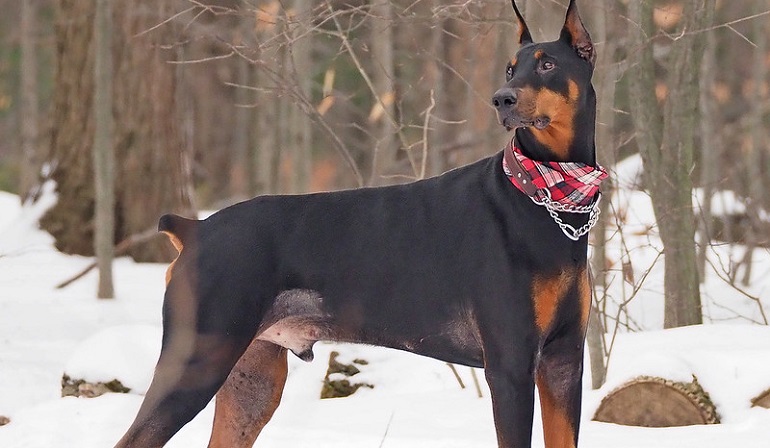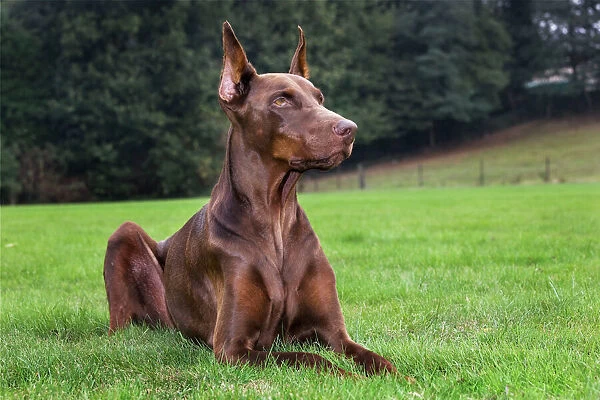The Doberman Pinscher is a sleek, muscular dog breed known for its intelligence, loyalty, and protective instincts. These dogs are often used as working dogs in law enforcement, search and rescue, and the military. While Dobermans can be excellent guard dogs, they are also loving and affectionate companions when properly trained and socialized. In this article, we will dive deeper into the history, physical characteristics, and temperament of the Doberman Pinscher to gain a better understanding of this remarkable breed.
History of the Doberman Pinscher

The Doberman Pinscher was created in the late 1800s by Louis Dobermann, a tax collector in Apolda, Germany. Dobermann was looking for a dog that would be both loyal and protective. He crossed a number of different breeds, including the Rottweiler, German Shepherd, and Weimaraner, to create the Doberman.
The Doberman was first recognized as a breed by the German Kennel Club in 1900. The breed quickly became popular in the United States, and the American Kennel Club (AKC) recognized the Doberman in 1908. During World War II, the Doberman was used extensively by the U.S. Marine Corps as a war dog, further solidifying its reputation as a brave and reliable working dog.
Origins of the Name “Pinscher”
The word “pinscher” comes from the German word “pincer,” which means “to nip” or “to pinch.” This name was given to the breed due to their tendency to grip and hold onto their prey, making them excellent hunting dogs. However, with proper training and socialization, Dobermans can also make great family pets.
Popularity of the Doberman Pinscher
Dobermans have consistently ranked in the top 20 most popular dog breeds in the United States, according to the AKC. Their intelligence, loyalty, and protective instincts make them a popular choice for families and individuals looking for a devoted companion. However, it is important to note that Dobermans require proper training and socialization to ensure they are well-behaved and well-adjusted dogs.
Physical Characteristics of the Doberman Pinscher

Dobermans are a large breed of dog, with males standing at 26-28 inches tall and weighing 65-80 pounds. Females are slightly smaller, standing at 24-26 inches tall and weighing 55-70 pounds. They have a sleek, muscular build with a short, smooth coat. The Doberman’s coat can come in a variety of colors, including black, red, brown, and blue.
Ears and Tail Docking
One distinctive physical characteristic of the Doberman Pinscher is their cropped ears and docked tail. This practice originated from the breed’s working history, where it was believed that cropped ears and docked tails would prevent injuries while hunting or working. However, this practice has become controversial in recent years, and many countries have banned it. In some countries, it is even illegal to show a Doberman with cropped ears or a docked tail in dog shows.
Health Concerns
Like all dog breeds, Dobermans are prone to certain health issues. Some common health concerns for Dobermans include hip dysplasia, dilated cardiomyopathy (a heart condition), and von Willebrand’s disease (a blood disorder). It is essential to choose a reputable breeder who conducts health screenings on their dogs to reduce the risk of these health problems.
Exercise and Grooming Needs
Dobermans are an active breed and require daily exercise to keep them physically and mentally stimulated. They make great running or hiking companions and also excel in dog sports such as agility and obedience. Their short coat requires minimal grooming, but they do shed moderately, so regular brushing is recommended.
| Exercise Needs | Grooming Needs |
|---|---|
| High | Low to moderate |
Temperament of the Doberman Pinscher
Dobermans are intelligent, loyal, and protective dogs. They are known for their strong bond with their owners and will go to great lengths to protect them. However, this protective instinct can sometimes lead to aggression if not properly trained and socialized.
Training and Socialization
Early training and socialization are crucial for Dobermans to ensure they grow up to be well-behaved and well-adjusted dogs. Due to their intelligence and eagerness to please, Dobermans are highly trainable and excel in obedience and other dog sports. It is essential to use positive reinforcement techniques and avoid harsh training methods, as this can lead to fear and aggression in Dobermans.
Family Life
While Dobermans are often portrayed as fierce guard dogs, they can also make loving and affectionate family pets. They form strong bonds with their owners and are known to be gentle and patient with children. However, due to their protective nature, it is important to supervise interactions between Dobermans and young children to prevent any potential accidents.
Compatibility with Other Pets
Dobermans can get along well with other pets, especially if they are raised together from a young age. However, their prey drive may kick in when encountering smaller animals, so it is essential to monitor their interactions with cats or other small pets. Proper socialization and training can help reduce any potential issues.
Video
Conclusion
The Doberman Pinscher is more than just a guardian; they are intelligent, loyal, and loving dogs that make excellent companions when properly trained and socialized. Their history as a working dog has given them a reputation for being fierce and protective, but with the right training and socialization, they can also be gentle and affectionate family pets. If you are considering adding a Doberman to your family, make sure to do your research and choose a reputable breeder who prioritizes the health and well-being of their dogs. With proper care and training, a Doberman can be a loyal and devoted companion for many years to come.